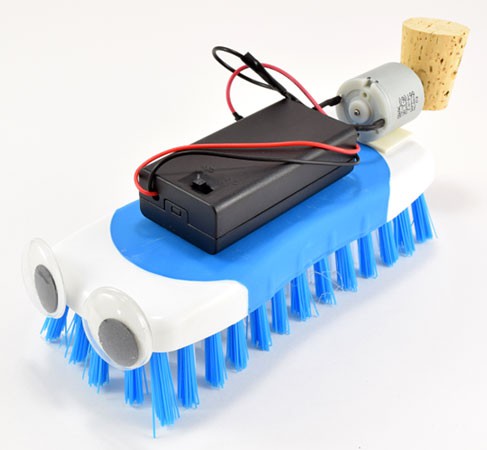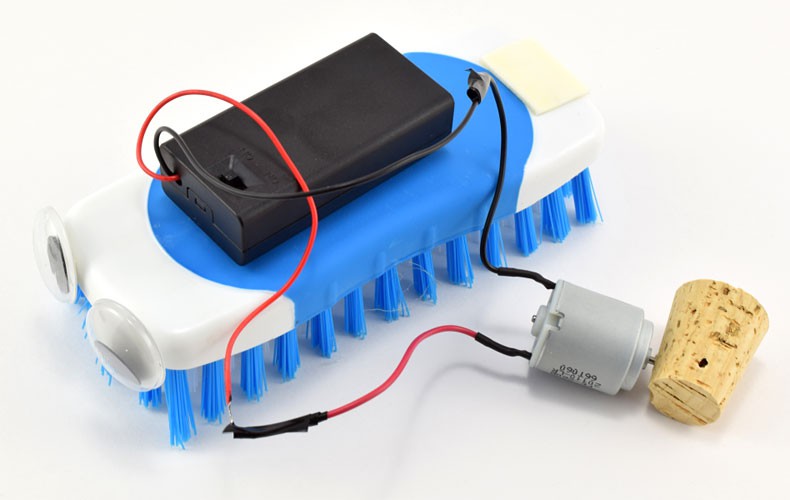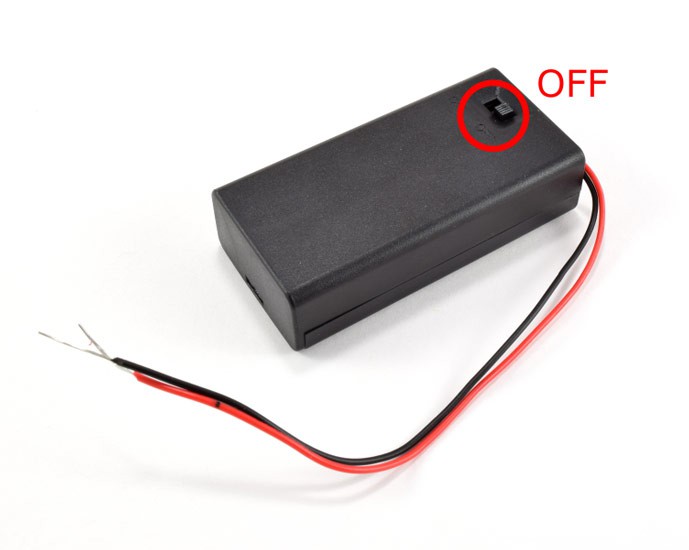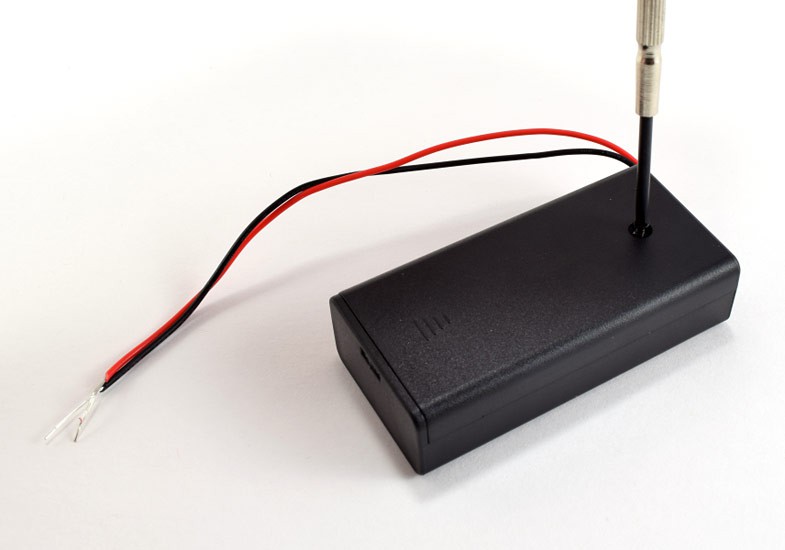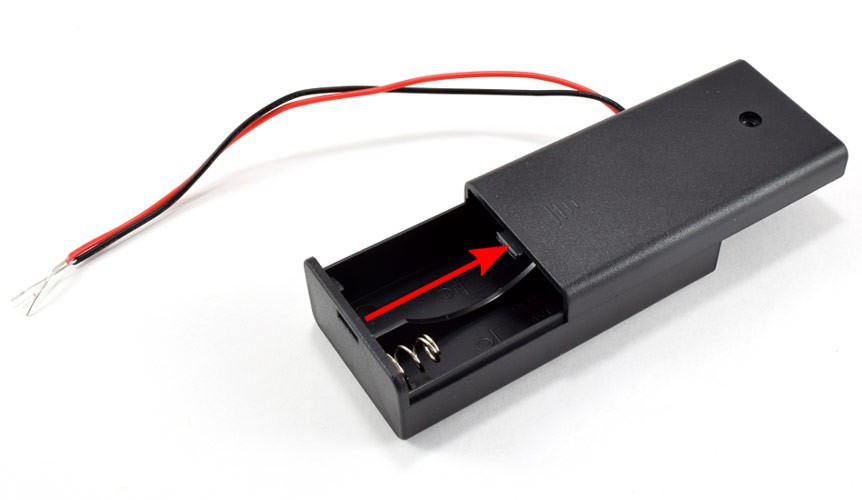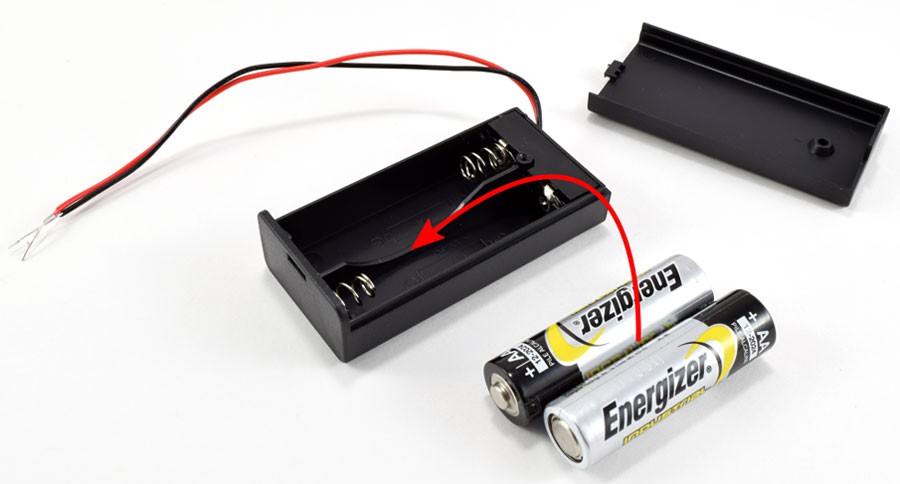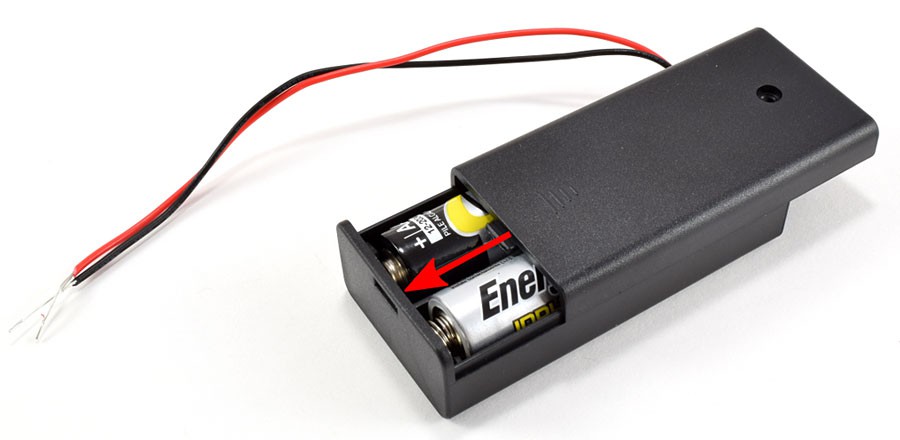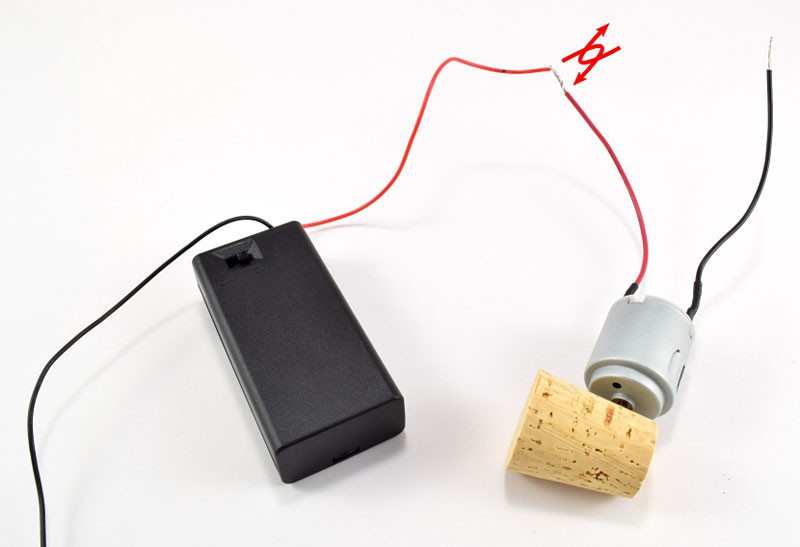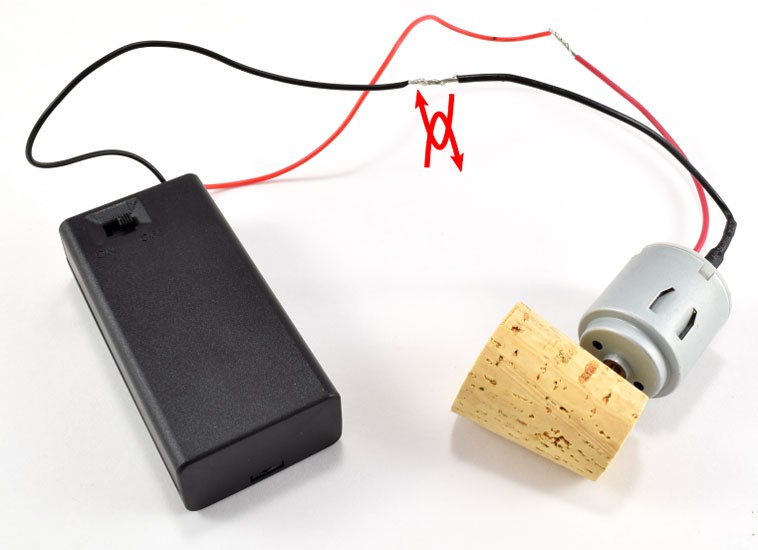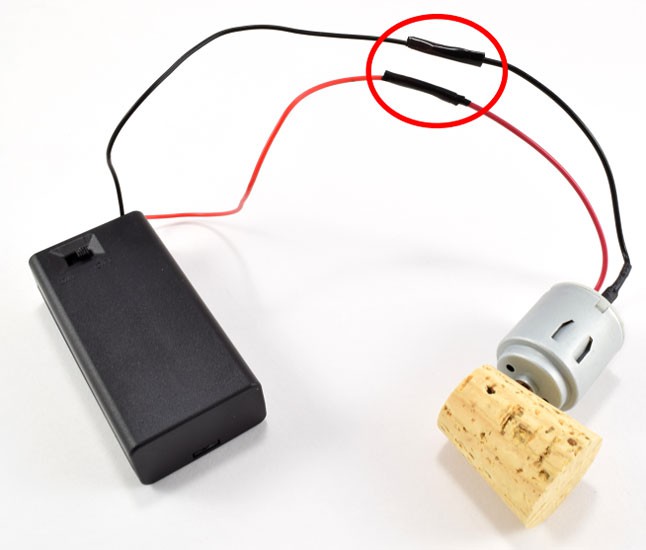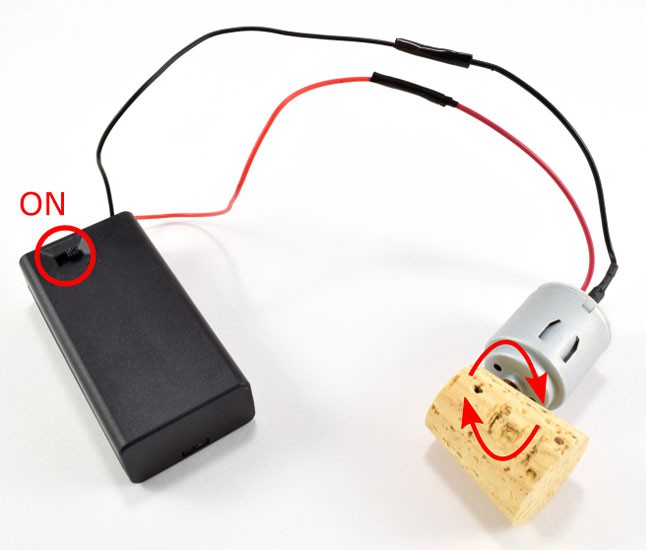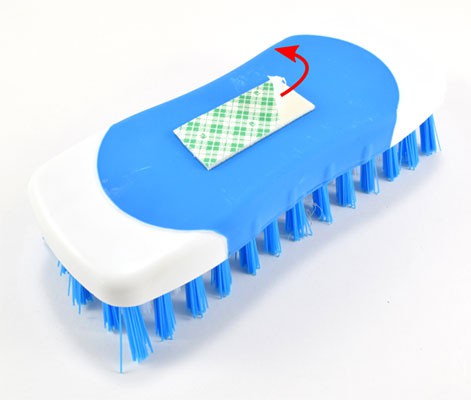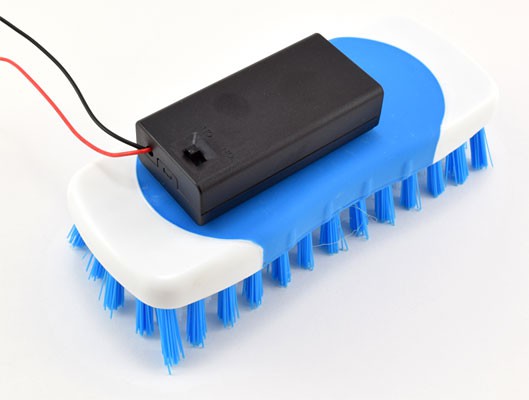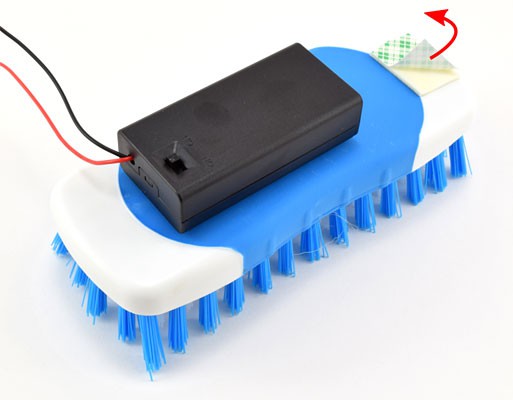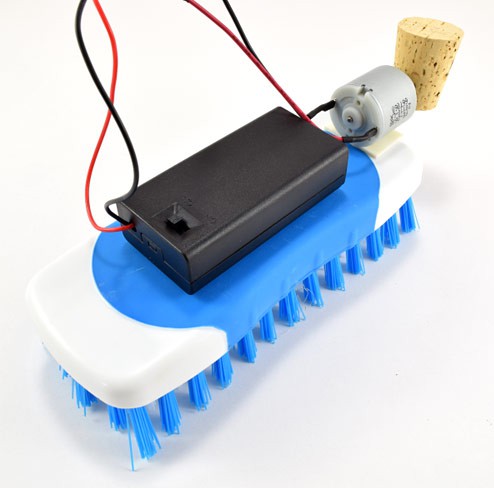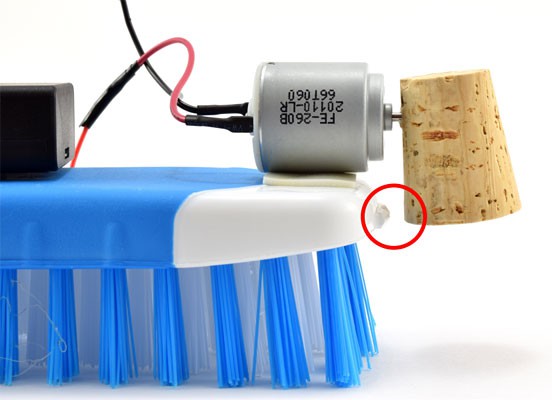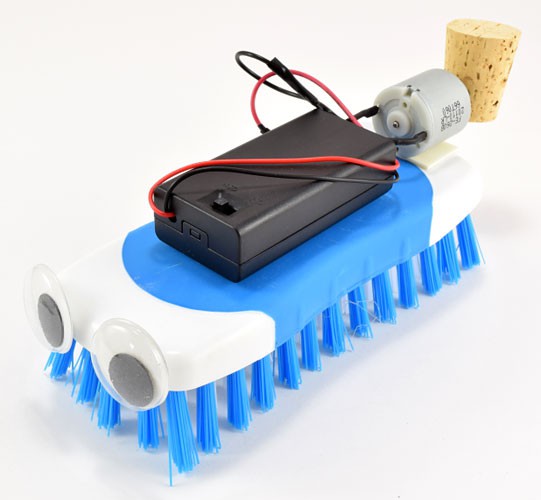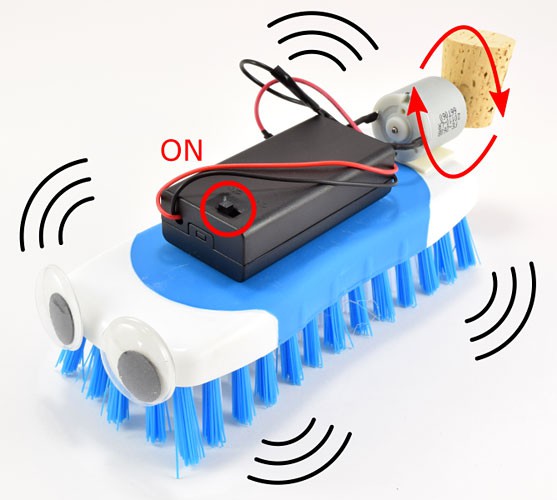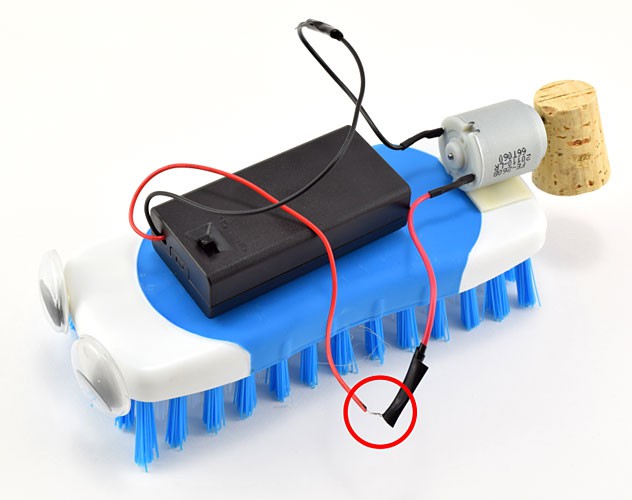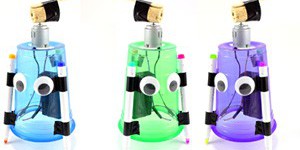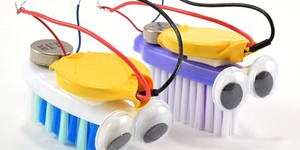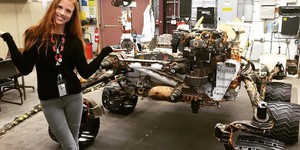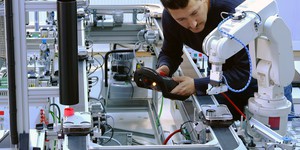Summary
Introduction
Brushbots are a simple, fun type of robot that you can build out of arts and crafts materials. They are easy to build and you do not need any previous experience with robotics. You can build them yourself, build two robots with a friend and race them against each other, or even make them sumo wrestle! Go to the Materials section to see what parts you need to build a brushbot, and see the instructions for a step-by-step guide on how to build one.Materials
- Bristlebot Robotics Kit, available from our partner Home Science Tools. You will need these parts from the kit:
- AA batteries (2)
- 2xAA battery holder
- 3 volt DC motor
- Note: The kit includes enough parts to build two brushbots, or one brushbot and one Art Bot. It also contains parts for two bristlebots.
- You will also need the following supplies (not included in the kit):
- Scrub brush
- Double-sided foam tape
- Optional: Hot glue gun (adult supervision required)
- Tape (any kind will work)
- Cork
- Small Phillips-head screwdriver
- Scissors
- Optional: Materials to decorate your robot (googly eyes, pipe cleaners, etcetera)
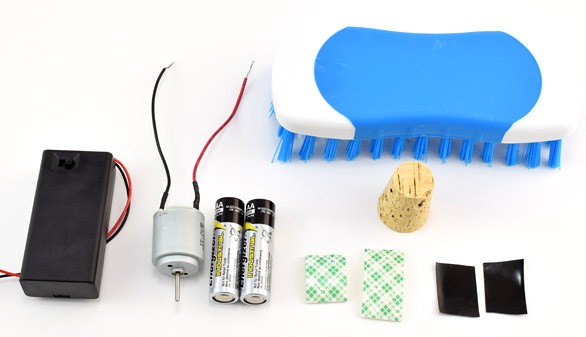 Image Credit: Ben Finio, Science Buddies / Science Buddies
Image Credit: Ben Finio, Science Buddies / Science Buddies
Disclaimer: Science Buddies participates in affiliate programs with Home Science Tools, Amazon.com, Carolina Biological, and Jameco Electronics. Proceeds from the affiliate programs help support Science Buddies, a 501(c)(3) public charity, and keep our resources free for everyone. Our top priority is student learning. If you have any comments (positive or negative) related to purchases you've made for science projects from recommendations on our site, please let us know. Write to us at scibuddy@sciencebuddies.org.
Instructions
- Follow this slideshow to assemble your brushbot:
- You can also watch a video that shows how to build your brushbot.
- Follow these troubleshooting tips when using your brushbot:
- If your brushbot stops moving suddenly, check to make sure that one set of wires did not come loose. If you did not twist the wires tightly enough, the vibrations may cause them to come apart. If necessary, take off the tape, tightly re-twist the wires, and then reapply tape.
- As your robot wobbles around, some pieces may fall off. If necessary, use more tape or hot glue to reattach them.
- Always turn your robot off when not in use to help conserve battery power.
What Happened?
When you turn the motor on, it makes the robot vibrate and move across the table. This happens because you attached an off-center weight (the cork) to the motor's spinning shaft. If you removed the cork, the robot would not vibrate at all. This is the same concept used to make video game controllers, electric toothbrushes, and cell phones vibrate; they have little spinning motors with weights inside!Your robot probably did not move in a straight line. In fact, it probably buzzed all over the place, and crashed into things! This is because your brushbot's movement is random. There is no computer "brain" telling the robot how to steer. More-advanced robots rely on computer programs to help them avoid crashing into things.
Digging Deeper
When you connected the battery pack and motor's wires, you completed a circuit. This allows electricity to flow in a loop from the battery, through the red wires to the motor, and through the black wires back to the battery. Electricity needs a closed circuit (or a complete loop) to flow. If you only connected one set of wires, the motor would not turn on, because you would have an open circuit.The metal wires of your circuit are conductors, meaning they allow electricity to flow. They are surrounded by colored (red and black) plastic, which is an insulator, that does not let electricity flow. Electrical tape is also an insulator. You used electrical tape as insulation to help prevent the exposed metal parts of the wires from bumping into each other and creating a short circuit. Short circuits are bad because they can cause your battery to get very hot.
Ask an Expert
For Further Exploration
- Try using other materials to make the body of your robot instead of a scrub brush. For example, can you make a "junkbot" out of recycled materials like plastic bottles and cardboard?
- Brushbots generally go faster when they have slanted bristles. Can you permanently bend the bristles of your brush so they all face in one direction (for example, leave the scrub brush under a stack of heavy textbooks overnight), or use scissors to trim them and create a slanted surface?
- Your bristlebot kit has enough materials to build two brushbots. Have a friend build a brushbot and race them against each other, or make them sumo wrestle by seeing which one can knock the other robot over!
Related Resources
Project Ideas
Links
- Blog Post: Building Bristlebots: Basic Toothbrush Robotics
- Blog Post: Bot Building for Kids and Their Parents: Celebrating Student Robotics


